Introduction
Bathrooms are no longer just functional spaces but sanctuaries where design meets sustainability. Natural materials offer the perfect blend of visual appeal, durability, and eco-friendliness for these intimate spaces.
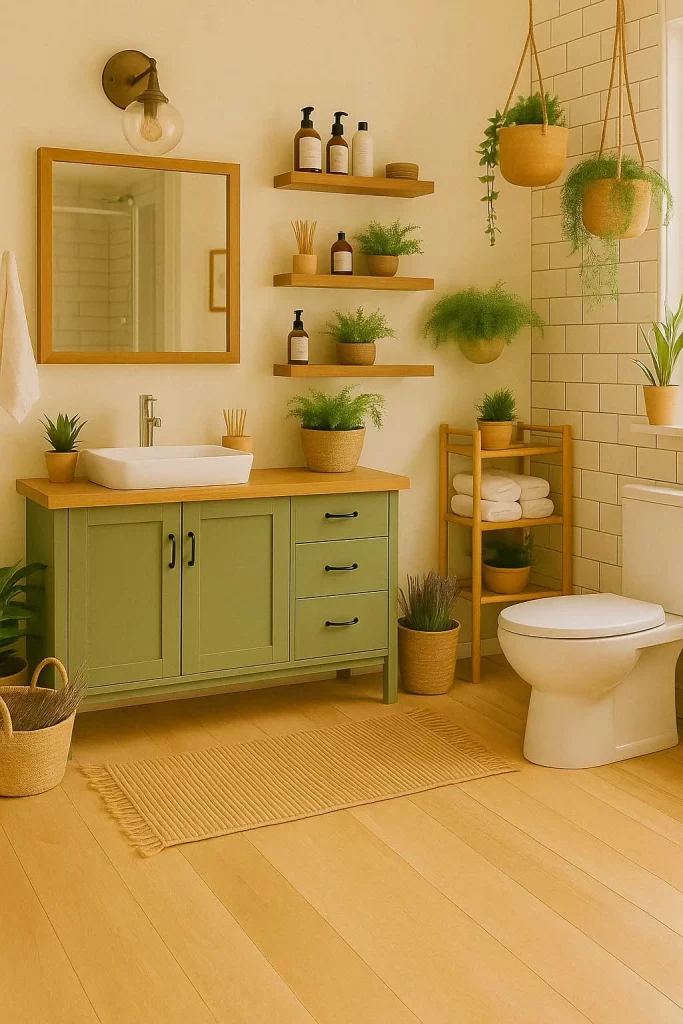
Why Choose Natural Materials for Your Bathroom?
Natural materials bring numerous benefits to bathroom design:
- Lower environmental impact through renewable resources
- Non-toxic elements that improve indoor air quality
- Unique textures and patterns that create visual interest
- Durability that withstands humid conditions
- Connection to nature that promotes relaxation and wellbeing
Let’s look at the top natural materials transforming modern bathrooms.
Wood: Warmth and Character
Reclaimed Wood

Reclaimed wood from old barns, factories, and warehouses brings history and character to bathroom spaces. This material:
- Provides unique weathered textures and patina
- Works beautifully for vanities, shelving, and accent walls
- Reduces landfill waste (construction debris makes up 25% of landfill volume)
- Stands up to humidity when properly sealed with natural oils or water-based finishes
Bamboo: The Sustainable Superstar
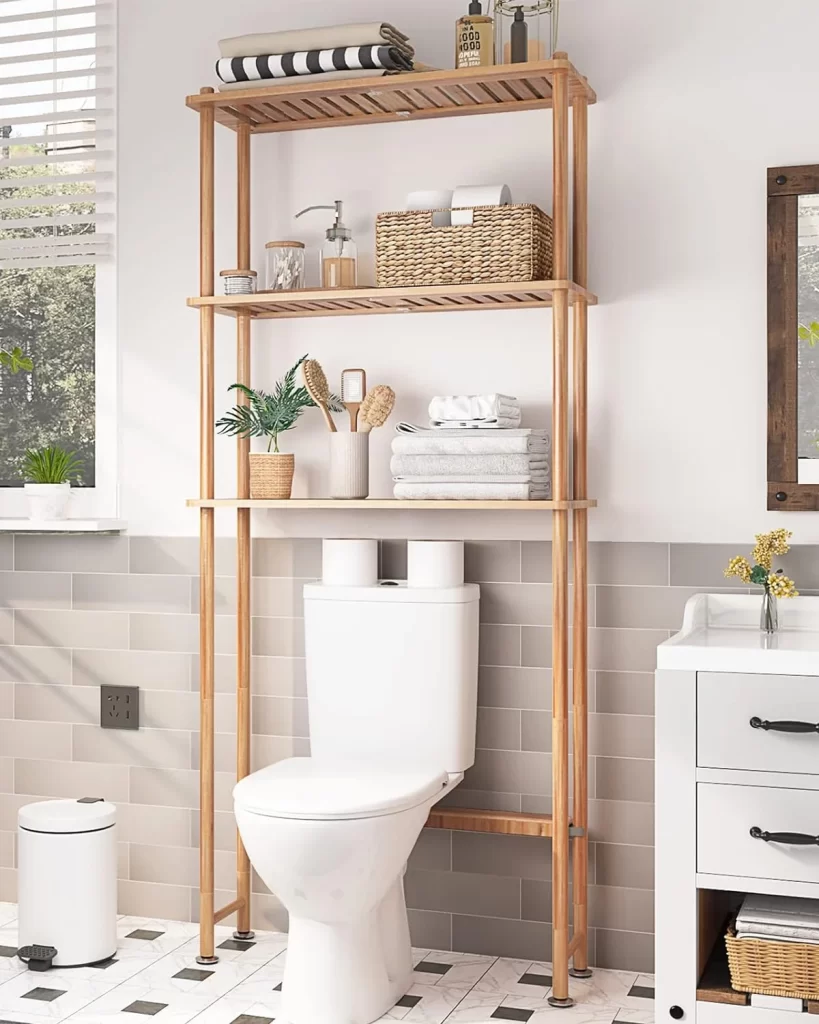
Bamboo has become a bathroom design favorite thanks to its:
- Incredible growth rate—maturing in 3-5 years versus decades for hardwoods
- Self-regenerating root system eliminating replanting needs
- Natural antimicrobial properties that fight mold in humid environments
- Versatility for flooring, cabinetry, wall panels, and accessories
- Contemporary appeal when carbonized for richer coloration
Stone: Timeless Beauty
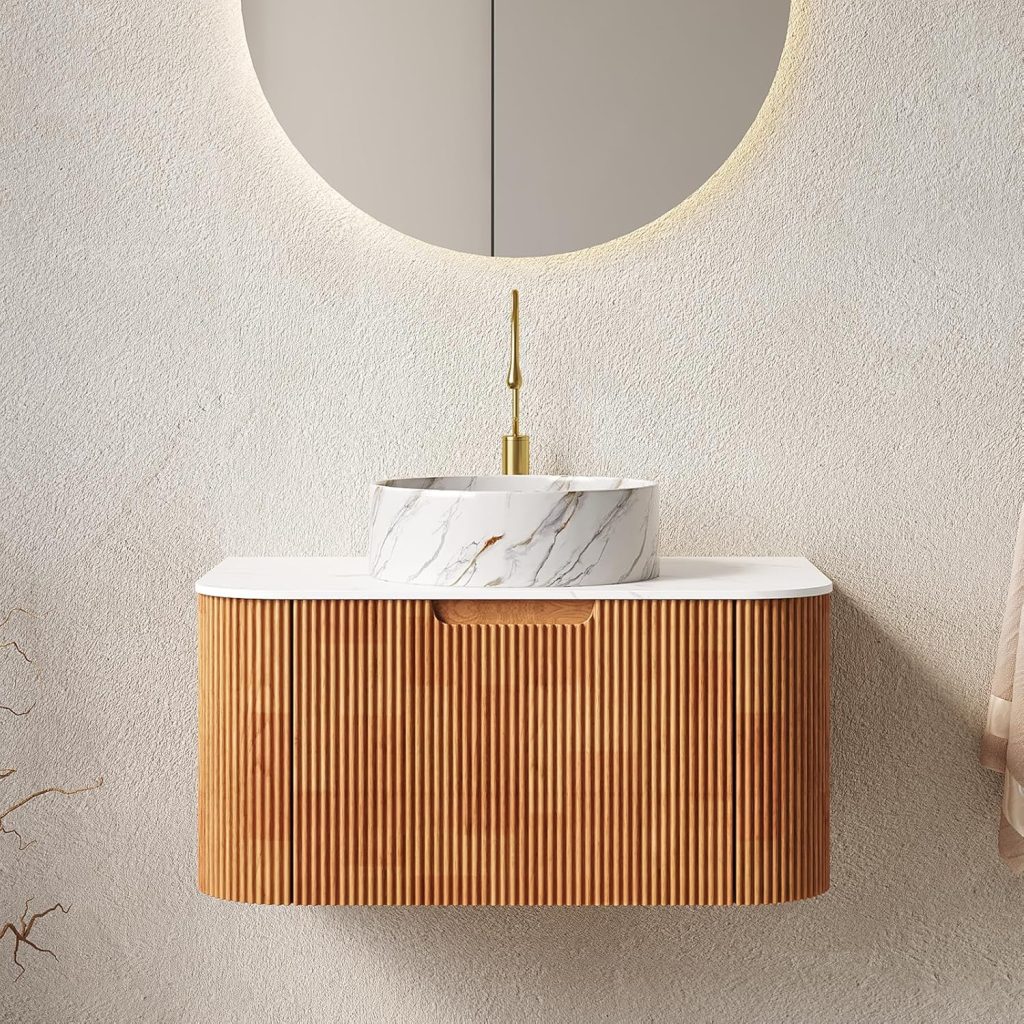
Natural stone brings geological uniqueness and longevity to bathroom design:
- Slate provides slip-resistant surfaces ideal for shower floors
- Marble adds luxury to countertops and wall panels
- Granite resists wear and tear on vanity tops
- River stone creates massage-like shower floor textures
Modern innovations include shadowstone panels that combine rugged textures with refined edges for transitional designs.
Stone requires proper sealing with penetrating enhancers to ensure stain resistance while maintaining its natural breathability—crucial for moisture management.
Ceramic and Porcelain: Natural Origins with Modern Performance
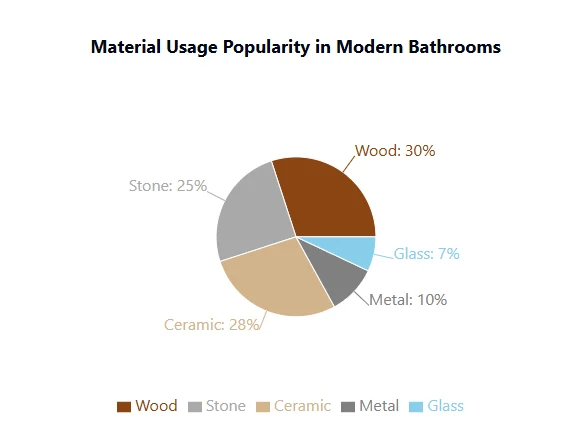
Though processed, ceramics derive from abundant natural clay:
- Large-format porcelain tiles (up to 120×120 cm) minimize grout lines
- Digital printing techniques replicate marble veining or wood grain
- Recycled glass aggregates can comprise up to 40% of tile composition
- Lower energy requirements compared to synthetic composites
Metals: Industrial Elegance
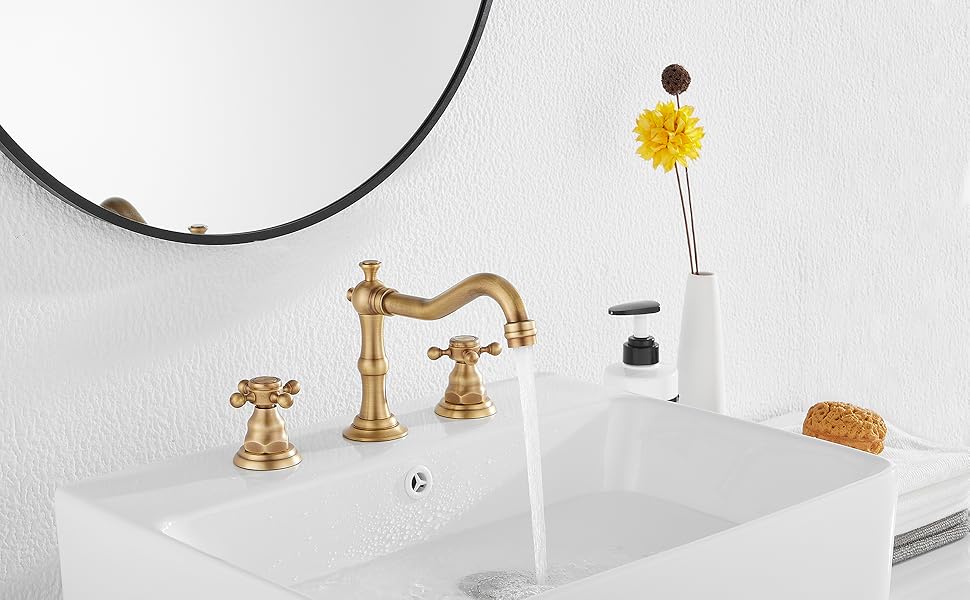
Metal fixtures and accents bring both functionality and style:
- Brass develops a protective patina, reducing the need for harsh cleaners
- Stainless steel (containing 60-80% recycled content) resists corrosion
- Matte black steel vanities paired with reclaimed wood create industrial-chic contrasts
- Brushed finishes hide water spots for easier maintenance
Glass: Transparency and Recycled Beauty
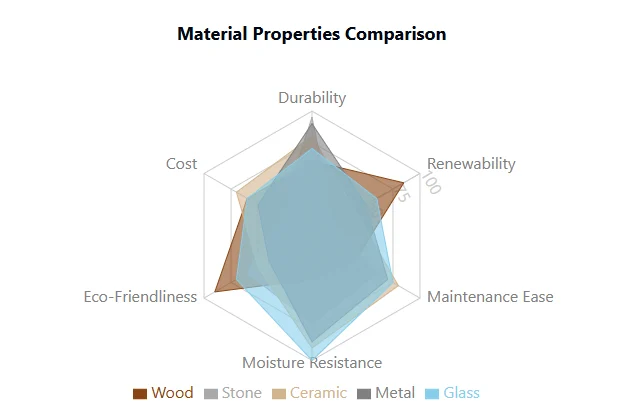
Recycled glass finds purpose in:
- Countertops with terrazzo-like effects
- Mosaic tiles in sea glass greens or amber tones
- Vessel sinks that display unique colors and textures
- Feature walls that create luminous focal points when backlit
The non-porous surface inhibits bacterial growth, making glass hygienic for wet areas.
Combining Materials with Sustainable Systems
Natural materials work best when integrated with other sustainable bathroom elements:
- Low-flow fixtures (1.8 GPM showerheads) reduce water use by 30%
- Thermostatic valves protect ceramic and glass enclosures from thermal shock
- Tankless toilets housed in bamboo cabinetry save up to 18,000 gallons annually
- Natural oil finishes avoid VOCs that could be amplified by steam
- Clay-based plasters regulate humidity through natural breathability
Health Benefits of Natural Materials
The use of natural materials in bathrooms goes beyond aesthetics:
- Studies show exposure to natural materials can lower cortisol levels by up to 15%
- Stone pebble floors provide tactile stimulation
- Veined marble subconsciously evokes flowing water, enhancing relaxation
- Improved indoor air quality through non-toxic finishes and natural ventilation
Environmental Impact
The environmental benefits are substantial:
- A bamboo vanity produces just 12 kg CO2e across its lifecycle, compared to 48 kg for fiberboard alternatives
- Locally quarried stone requires 80% less transport energy than imported varieties
- Reclaimed materials have minimal embodied energy, their environmental cost having been absorbed during original harvesting
Practical Considerations

When incorporating natural materials in bathrooms, consider:
- Moisture resistance – Ensure all materials are properly sealed for wet environments
- Maintenance requirements – Some natural materials need regular upkeep
- Weight factors – Stone and concrete may require additional structural support
- Budget implications – Initial costs might be higher but longevity offers value
- Sourcing ethics – Verify sustainable harvesting and fair labor practices
Future Trends
Emerging innovations in natural bathroom materials include:
- Mycelium-based composites for moisture-resistant vanities
- Photovoltaic glass tiles that generate electricity from sunlight
- Modular stone panels designed for future disassembly and reuse
- Bio-based sealants that enhance natural material performance
Conclusion
Natural materials transform bathrooms into sanctuaries that respect both human health and environmental wellbeing. By blending the timeless appeal of wood, stone, and ceramics with innovative systems, you can create a space that nurtures mind, body, and planet. The bathroom becomes not just a functional necessity but a testament to sustainable living—proving that responsibility and luxury can coexist beautifully.
Dora Decora is a biophilic interior design specialist and passionate blogger. With a deep commitment to integrating nature into living spaces, Dora specializes in creating environments that foster human-nature connections through thoughtful design elements. Her approach emphasizes sustainable materials, natural lighting, and organic patterns that enhance wellbeing and reduce environmental impact.
This post (https://homechroma.com/himalayan-salt-lamp-benefits/) was originally published by Dora Decora on Home Chroma. As an Amazon Associates partner, qualifying purchases are compensated.


